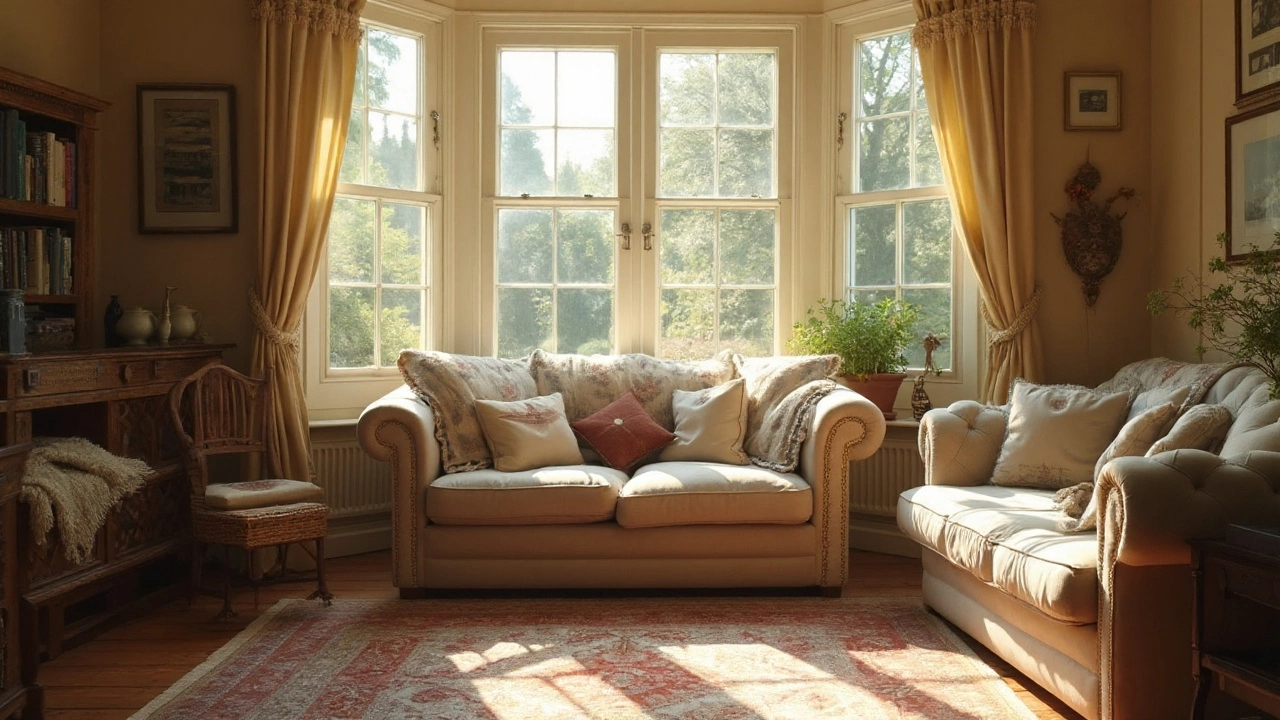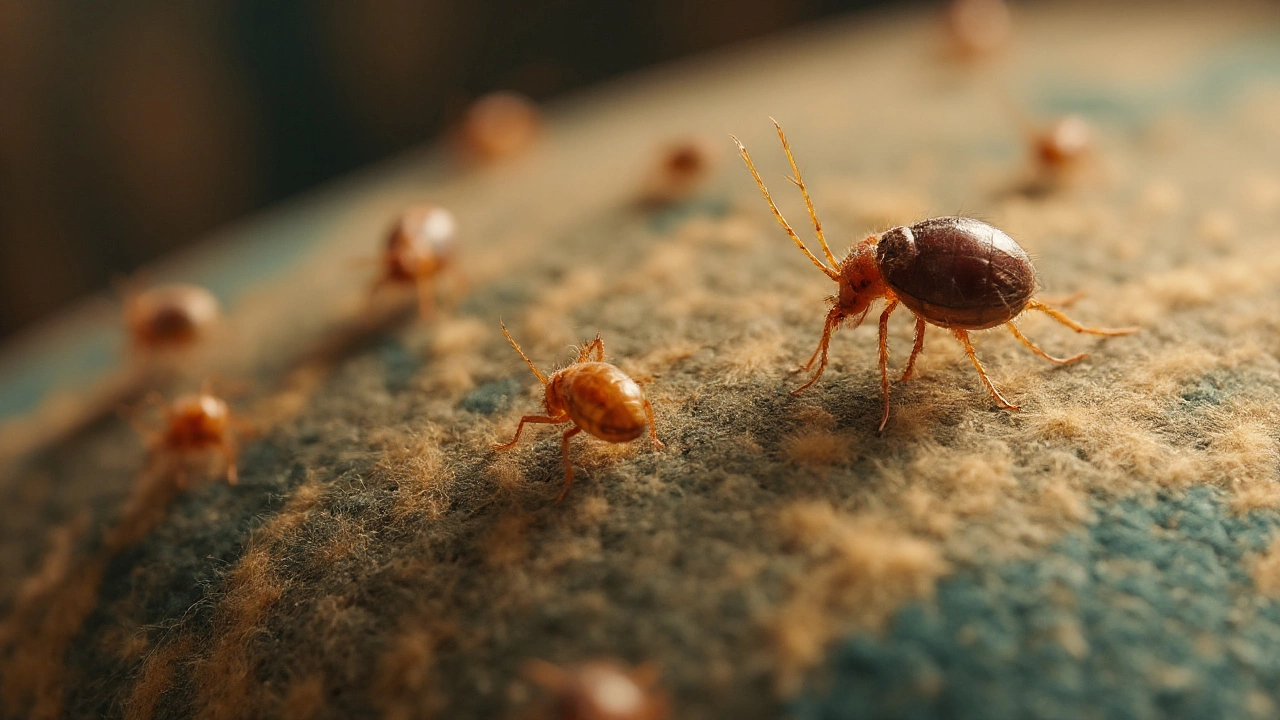Picture this: You settle down on your comfy couch, maybe to watch something or read a book, and suddenly you start sneezing. Ever wonder what tiny creatures might be hiding in the fibers under your nose? Furniture mites are so sneaky and tiny, most people never see them, but their impact can turn your chill night into a sniffly mess. These invisible squatters love your sofa, bed, and armchair, and if you’ve ever wondered how to spot them or what they actually look like, you’re about to get all the squirmy details you never knew you needed.
What Exactly Are Furniture Mites?
Most people call them dust mites, and yes, they actually look about as exciting as you’d expect from a nearly invisible bug. Furniture mites are microscopic arachnids—a fancy way of saying they’re related to spiders but way smaller and less easy to see. The most common species found in homes are from the genera Dermatophagoides pteronyssinus (European house dust mite) and Dermatophagoides farinae (American house dust mite). These guys measure around 0.2 to 0.3 millimeters. Forget about spotting one with your naked eye. They look like tiny white or cream-colored blobs under a microscope, with eight short legs and a mouth made for shredding dead skin flakes. Their bodies look a bit see-through and rounded—think of a cross between a grain of rice and an alien jellybean. They don't have eyes or wings and can’t jump, crawl quickly, or bite.
While you can't really see them, you can sometimes spot their dirty work. Ever noticed a light, dusty coating on your shelves and sofa that never really goes away? That might be a sign of their presence. Mites don’t just hang around; they feed on dead skin—specifically, your dead skin cells. In fact, an average adult sheds about 1.5 grams of dead skin every day, enough to feed a million mites. No wonder they thrive in any spot where you lounge, lie, or rest for long periods. They really don’t like sunlight or dry air, so they hide deep in fabric and cushioning. If you want to see one in detail, all it takes is a decent microscope—10x to 40x magnification will let you spot these ghostly, slow-moving creatures clinging to fibers.
| Mite Species | Color | Size | Body Shape | Where Found |
|---|---|---|---|---|
| Dermatophagoides pteronyssinus | White to pale grey | 0.2–0.3 mm | Oval, slightly flattened | Sofas, beds, pillows |
| Dermatophagoides farinae | White to pale brown | 0.25–0.3 mm | Round, squishy | Blankets, mattresses |
How Do Furniture Mites Look Under a Microscope?
Sit back, because here’s where things get kind of creepy. Under a microscope, furniture mites are a ghostly white with faint legs sticking out from the sides—eight in total. These legs are stubby, almost chunky, and tipped with teeny claws that help them grip fibers. Their bodies don’t have a hard shell or real segments. Instead, they look almost like jelly that’s starting to set, with a soft line separating the front and back. The head region is smaller and feels like it’s just stuck onto the body. It’s not pretty—think of a dust-colored tick with little pincers, which is actually pretty accurate.
If you ever get your hands on a pocket microscope, it’s weirdly fascinating to see one in action: moving slowly along a hair or a soft thread, using its claws to latch on. Sometimes you’ll spot dark specks inside their translucent bodies—those are food particles, basically tiny chunks of dead skin. They’re not crawling around in swarms like ants, but the numbers add up fast. One gram of house dust can contain as many as 1,000 mites!
What about their eggs? These are even tinier, oval, clear-white specks hidden deep in cushion seams and mattress cracks. You probably won’t see eggs, but a professional using tape sampling and microscopy will definitely find clusters. Mite colonies can double every few weeks if the conditions are right, especially if the weather is humid and the fabric never gets fully dry. In homes with poorly ventilated upholstery and bedrooms, you’ll see faster growth. If you've got stuffed animals, plush chairs, or carpet, you're practically running a mite hotel.

Where Furniture Mites Hide and Signs You Might Have Them
Don’t panic if you can’t see these critters—almost everyone has them. Mites love dark, humid, and warm places where they can feed and multiply undisturbed. Here’s a quick tour of their favorite hangouts:
- Mattresses and box springs: Especially if you’ve never cleaned them. The average mattress can harbor up to 10 million mites—it’s a real number, not a scare tactic.
- Sofa cushions: The foam, lining, and deep seams make ideal hideouts, and those little nooks usually trap your dead skin and crumbs.
- Rugs and carpets: Especially wool or high-pile types, which rarely see direct sunlight.
- Curtains and drapes: Heavy, rarely-washed fabric holds moisture and dust like crazy.
- Pillows and blankets: Anywhere you put your face is prime mite territory.
There’s another clue: Tiny, dark specks—almost like pepper—gather at the seams of mattresses and sofa cushions. These aren’t always mites themselves, but mite feces and body fragments. They show up more in homes with lots of humidity. In case you’re worried about biting, relax. Mites don’t bite or sting. They cause problems through allergenic proteins shed in their droppings and old skin sheds (called exuviae).
How to Tackle Furniture Mites and Keep Them in Check
So, what can you actually do about these tiny freeloaders? You can't get rid of them completely, but you can keep their population low and make your furniture less inviting. It’s simple and doesn’t take complicated gear. First, reduce humidity. Mites love air that’s more than 50% humid, so use a dehumidifier, especially in bedrooms or basements. Aim for 40-45% humidity for best results.
- Wash all bedding and cushion covers every 1-2 weeks, using hot water above 130°F (at least 54°C)—it kills mites and their eggs instantly.
- Vacuum furniture, rugs, and mattresses weekly. Use a vacuum with a HEPA filter to trap the tiny particles. Don’t forget to vacuum between and under cushions.
- Air out your room daily, and open curtains wide—sunlight dries out upholstery and slows mites down because direct sunlight kills them.
- Wrap pillows and mattresses in allergen-proof covers. These barriers are woven tight enough to block mites and their waste from escaping.
- If you have high-pile rugs or plush upholstery, think about switching to materials that are easier to clean. Hard floors and leather or vinyl furniture cut down on mite populations massively.
- Don’t forget to clean plush toys, curtains, and pet bedding. These are sneaky mite magnets, too.
- Freeze small items like stuffed animals overnight to kill mites—just make sure there’s no moisture left, or mold might take over later.
Mite sprays and chemical treatments exist, but you don’t want to use those unless things are out of control. Sticking to cleaning, washing, and dry air is more than enough for most homes. Pro tip: If you want an extra layer of mite-fighting power, use bedding or furniture sprays with eucalyptus or tea tree oil—these oils have been shown in studies to cut down on mite activity and are safer for humans.
If you’re checking out your furniture under a microscope—or even just obsessing over the best way to breathe clean air at home—remember that furniture mites are everywhere. Keeping your home clean, dry, and as dust-free as possible goes a long way. No one’s house will ever be totally bug-free, but a little knowledge and a few smart habits keep you comfy and breathing easy.


